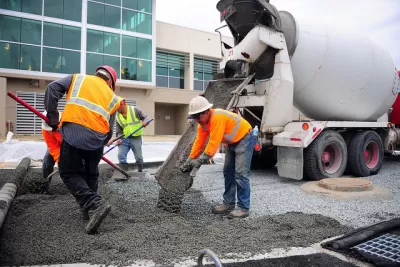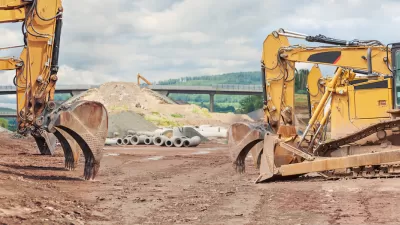Awarding federal funding via competitive grants could block grant opportunities for communities that need them the most.

As the Biden administration prepares to distribute billions in infrastructure funding to cities and states via competitive grants, some experts caution that many smaller and rural communities, lacking the institutional capacity to prepare slick grant applications and proposals, will be left out.
As Jake Blumgart writes, "Metro areas like Boston have a deep bench of experienced planners, a rich network of foundations and community development corporations, and organized business groups that push for transit and housing reform. But what about rural areas, deindustrialized Midwestern regions, or traditionally low tax and low service corners of the country like much of the American South?"
Most grants also require a 20 percent match, which may pose a challenge for poorer communities. "If federal agencies judge applicants by their capacity to draft and execute complex and resource-intensive projects, areas with smaller populations and smaller tax bases may suffer," says Blumgart. Federal funding available via competitive grants includes money for transit, brownfield remediation and climate resilience, electric vehicle infrastructure, and highway removal.
With smaller communities at a structural disadvantage, experts like Bruce Katz of Drexel University suggest the federal government could bolster capacity-building grants and improve access to grant-writing support for jurisdictions that would otherwise have a hard time catching the attention of federal officials.
FULL STORY: Smaller Cities, Poorer Regions Could Be Infrastructure Losers

Study: Maui’s Plan to Convert Vacation Rentals to Long-Term Housing Could Cause Nearly $1 Billion Economic Loss
The plan would reduce visitor accommodation by 25,% resulting in 1,900 jobs lost.

North Texas Transit Leaders Tout Benefits of TOD for Growing Region
At a summit focused on transit-oriented development, policymakers discussed how North Texas’ expanded light rail system can serve as a tool for economic growth.

Why Should We Subsidize Public Transportation?
Many public transit agencies face financial stress due to rising costs, declining fare revenue, and declining subsidies. Transit advocates must provide a strong business case for increasing public transit funding.

How to Make US Trains Faster
Changes to boarding platforms and a switch to electric trains could improve U.S. passenger rail service without the added cost of high-speed rail.

Columbia’s Revitalized ‘Loop’ Is a Hub for Local Entrepreneurs
A focus on small businesses is helping a commercial corridor in Columbia, Missouri thrive.

Invasive Insect Threatens Minnesota’s Ash Forests
The Emerald Ash Borer is a rapidly spreading invasive pest threatening Minnesota’s ash trees, and homeowners are encouraged to plant diverse replacement species, avoid moving ash firewood, and monitor for signs of infestation.
Urban Design for Planners 1: Software Tools
This six-course series explores essential urban design concepts using open source software and equips planners with the tools they need to participate fully in the urban design process.
Planning for Universal Design
Learn the tools for implementing Universal Design in planning regulations.
Ascent Environmental
Borough of Carlisle
Institute for Housing and Urban Development Studies (IHS)
City of Grandview
Harvard GSD Executive Education
Toledo-Lucas County Plan Commissions
Salt Lake City
NYU Wagner Graduate School of Public Service





























